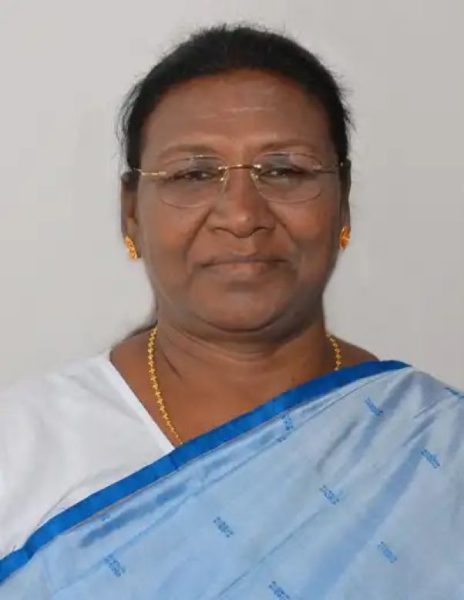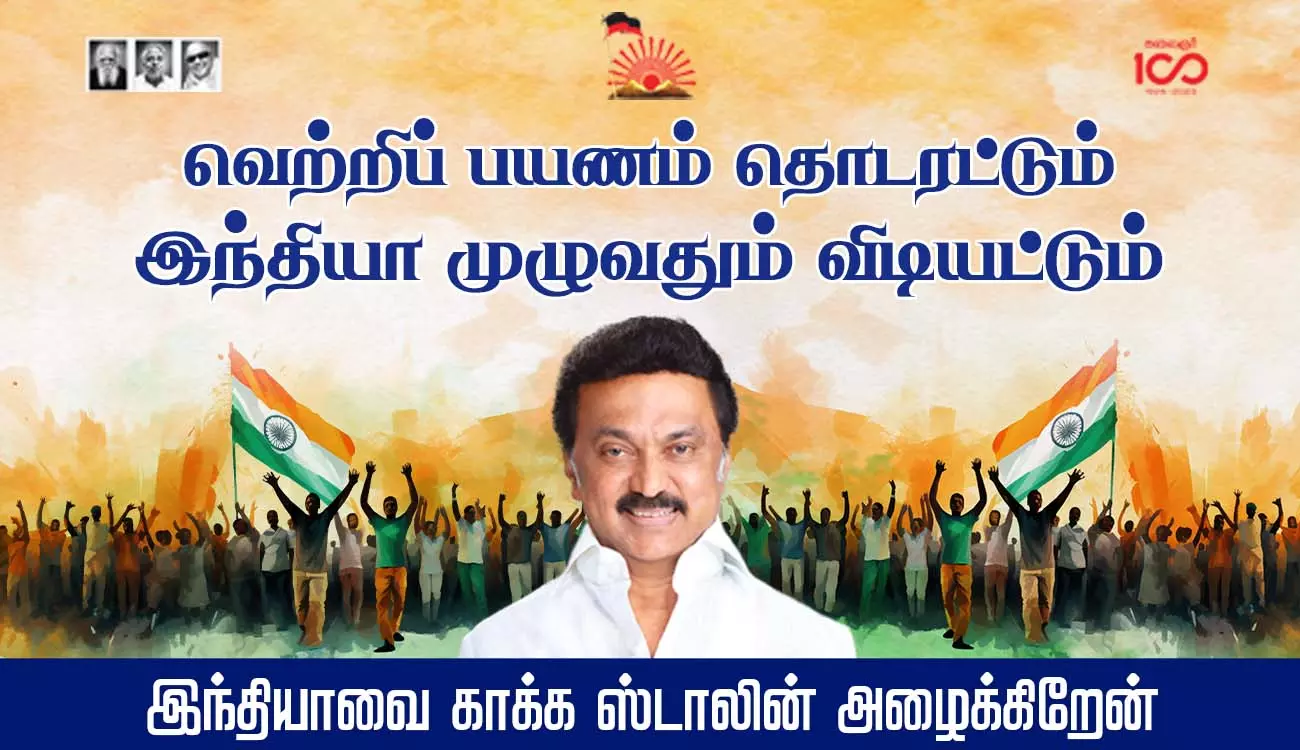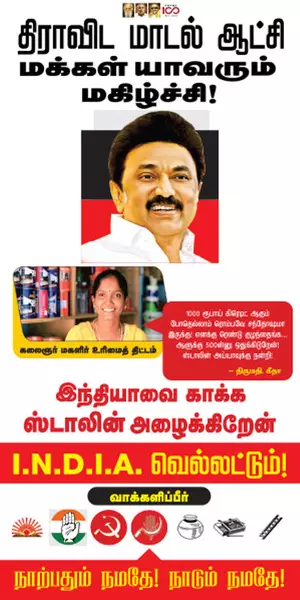
By choosing Droupadi Murmu as Presidential nominee, BJP kills two birds with one stone

Hours after the collective leadership of 17 Opposition parties “unanimously” backed the uninspiring 84-year-old Yashwant Sinha as their candidate for the July 18 Presidential election, the BJP, late on Tuesday (June 21) evening, practically won the impending poll well before the casting of ballots, by backing former Jharkhand governor Droupadi Murmu as the NDA’s nominee.
By fielding the 64-yearold Murmu, the BJP lived up to the reputation it has gained under the stewardship of Narendra Modi and Amit Shah – of unparalleled political savvy, shrewd electoral and coalition calculations and setting the narrative for engagement with its rivals.
At the face of it, Murmu’s political stature may not equal that of Sinha’s. Indeed, it even pales before Sinha who served important roles in government both during his stint in the Indian Administrative Services and then as Union minister under two prime ministers, Chandra Shekhar and Atal Behari Vajpayee. The high point of Murmu’s public life, up until now, was her gubernatorial tenure in Jharkhand – the first tribal woman to hold the post and also the first to complete five years in the Ranchi Raj Bhawan; prior to which she was barely known beyond her home state of Odisha where she had served two terms as a BJP legislator and as minister in the erstwhile BJD-BJP coalition government under Naveen Patnaik.
Also read: Yashwant Sinha is presidential candidate in largely symbolic fight
The BJP clearly expects that what Murmu may seemingly lack in political profile, she will more than make up in the symbolism of her candidature. It is pertinent to contrast the candidature of Sinha with that of Murmu to better understand why the Opposition’s choice now appears so completely haggard.
Why Sinha’s political past inspires little awe
Sinha as the consensus candidate of sundry Opposition parties was evidently a ‘last resort’ as other probables – NCP chief Sharad Pawar, former J&K CM Farooq Abdullah and former Bengal governor Gopalkrishna Gandhi – had bowed out of the race. The Opposition parties had cut a sorry figure even before announcing Sinha’s name.
Instead of quietly holding their talks and making the name of their candidate public only after a consensus was reached and the nominee’s assent received, the Opposition parties repeatedly shot of names of people they approached only for these eminences – Pawar, Abdullah and Gandhi – to publicly turn down the offer. It seemed lost on the Opposition parties that this repeated rejection only helped build the impression that none of these leaders wanted to enter a race they knew they were bound to lose.
The candidature of Sinha also proved, yet again, the Opposition’s inability to think out of the box despite its ranks boasting of hard-nosed politicians ranging from the Machiavellian Pawar to the pragmatic Sitaram Yechury and the ruthless Mamata Banerjee or even thoroughbred electoral warhorses such as Lalu Yadav and Mallikarjun Kharge. After long deliberations, the only name these leaders could come up with was that of a disaffected former BJP leader.
As per the joint Opposition resolution, Sinha is “eminently qualified to uphold the secular and democratic character of the Indian Republic and its constitutional values”. These credentials, however, appear to stem more from Sinha’s bitter criticism of Narendra Modi post 2014 than his own record as a bureaucrat-turned politician who served as a top line leader of the same BJP that the Opposition wishes to challenge at the hustings and whose son, Jayant Sinha, continues to be the saffron party’s Lok Sabha MP.
The thumbs down from several public intellectuals for Sinha’s candidature also shows that his past political stint that the Opposition parties are now projecting as part of his “long and distinguished career in public life” inspires little confidence even among strident Modi critics. After all, Sinha was a leading light of the BJP – Union minister for finance and later external affairs – in the Vajpayee government during a period that saw the post-Godhra communal carnage in Gujarat. He remained within the saffron fold when Modi rose to become Prime Minister. Yet, the Opposition believes that Sinha best represents the narrative it hopes to spin with the Presidential polls – that of fighting an autocratic, communal regime that has relentlessly undermined India’s Constitution.
Murmu – symbol of BJP’s tribal outreach
Now look at Murmu’s credentials, the narrative that the BJP is expected to spin around her candidature and the unmistakeable political considerations that are at play.
First and foremost is the symbolism of the saffron party paving the way for the first ever tribal woman to hold the Republic’s highest constitutional office – something the Opposition, particularly the Congress party, failed to do in the 75 years since India’s independence despite having no dearth of tribal leaders among their collective ranks.
This is certainly not to say that having a member of the historically oppressed but numerically strong community in the Rashtrapati Bhawan will improve the lot of the adivasis – or lessen the state’s atrocities against them. It may even be kosher for commentators to point out that an adivasi President will make no difference to the lives of ordinary tribals just as the ascension of Ramnath Kovind, a Dalit, to the high chair failed to alleviate the condition of ordinary Dalits. But, in a country where politics, unfortunately, thrives on symbolism more than any tangible difference on the ground, the BJP has made a deft electoral move by throwing its weight behind a tribal woman.
Also read: Yashwant Sinha: An officer, a minister and a politician
As the Presidential campaign gains momentum, it’s certain that the BJP and its allies will project Murmu’s candidature as a continuation of Modi’s quest for empowerment of the oppressed – a Dalit president in 2017, a tribal in 2022.
It is also important to mention that like Kovind, Murmu too comes from humble beginnings and isn’t a dynast or a ‘pedigreed’ leader who belongs to an oppressed community only in her title but not in her upbringing and life’s struggles. A former school teacher, Murmu has come up the ranks from a councillor in her native town of Rairangpur in Odisha’s Mayurbhanj district to a legislator, state minister, governor and now presidential candidate.
Getting Odisha, Jharkhand on board; checkmating Congress
The BJP leadership has also adroitly worked out its short and medium term political objectives. By fielding Murmu, a leader from Odisha, the BJP has ensured the support of chief minister Naveen Patnaik’s Biju Janata Dal for her candidature. The BJP was hoping to get BJD’s support in the polls to overcome the small deficit of votes it currently has in the Electoral College that picks the President. Murmu’s candidature has sealed the deal with Patnaik calling it a “proud moment for the people of Odisha” and hailing Murmu as a “shining example of women empowerment in the country”.
Besides the BJD, the BJP can now also realistically hope to get the support of Jharkhand chief minister Hemant Soren’s JMM for Murmu despite his party being in alliance with the Congress in the tribal-dominated eastern state. With his position as CM already rocky given allegations against him of wrongfully owning a mine in the state, Soren will find it difficult to refuse support for Murmu considering that he leads a party that claims to represent the interests of the adivasi community, which is also his principal vote bank.
Sinha, whose political base has been Hazaribagh in Jharkhand, may have hoped of getting the Jharkhand CM’s support for his presidential bid. With Murmu now in the ring, Soren may have to politely refuse any such assurance.
Murmu’s choice also presents the Congress party with a dilemma. Her candidature comes at a time when the Congress and its former president, Rahul Gandhi, have been trying to woo the tribal community. Rahul had launched his party’s adivasi satyagrah in poll-bound Gujarat just last month and reiterated his commitment to fighting for the welfare of the community. The assurance was strained within a month when the Congress, while declaring its candidates for the biennial Rajya Sabha polls, failed to field a single tribal candidate despite being in a position to win two seats from Chhattisgarh, a state that has a sizeable adivasi population.
In opposing Murmu in the presidential polls, the Congress will not just run the risk of being branded anti-tribal by the BJP but also of damaging its self-projection as a party committed to promoting women in politics.
Also read: NDA springs a surprise, picks Draupadi Murmu as Presidential candidate
The short term strategy of ensuring Murmu’s victory aside, the BJP has also factored in possible medium term electoral gains. Between end of 2022 and the Lok Sabha polls of 2024, states such as Gujarat, Madhya Pradesh, Rajasthan and Chhattisgarh are scheduled to go for polls. Each of these has a sizeable tribal vote bank that had spurned the BJP in the previous assembly polls.
The saffron party has already been on an overdrive to reverse these losses by celebrating the tribal community’s icons such as Birsa Munda. By picking Murmu, the BJP’s spin doctors are expected to go to town claiming that only Modi had the courage and vision of getting a tribal woman anointed the country’s President. In contrast, the Opposition presidential poll pitch may now seem tone-deaf or merely like a regurgitation of discordant notes by a scorned former BJP leader who the late Arun Jaitley had once famously taunted as a “job aspirant at 80 plus”.





